The winners of the fourth Global Holcim Awards for Sustainable Construction have been announced, and include a University of Melbourne graduate Milinda Pathiraja, who took home the second prize alongside her Robust Architecture Workshop colleague, Ganga Ratnayake.
Selected from 15 global finalists, which in turn were whittled down from an initial 6,000 entries, three projects in Colombia, Sri Lanka and the United States were awarded a total of US$350,000 in prize money.
All three recognise architectural interventions that deliver tangible benefits to local communities, which the forward-looking program seeks to promote in each three-year cycle.
Taking home the GOLD was ‘Articulated Site’ by Mario Camargo and Luis Tombé of Colectivo720 in Cali, together with Juan Calle and Horacio Valencia of EPM Group (Empresas Públicas de Medellín).
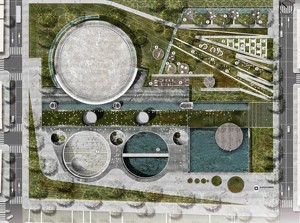
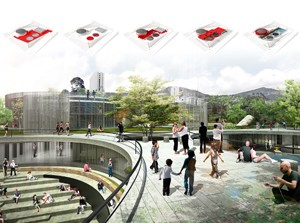
Left: rooftop plan - building merging with public space. Right: rooftop view
Centred on creating spaces around and above a series of water reservoirs, the project for a public park in Medellín, Colombia transforms existing public space and elements to create an outdoor auditorium and venues that highlight the value of water as an important resource of urban life.
The project was praised for forming a “socio-technical” landscape, its architectural form taking inspiration from the site’s history, surrounding topography, and structure of the existing tanks and pools. Special attention was also given to water management, utilising recycling technologies involving rainwater and grey water harvesting for irrigation of the park.

“The jury applauds the careful integration of the ensemble into the physical and social fabric of Medellín – in a scheme that is a model for best practice that could be emulated by other cities in Latin America and around the globe”, said head of the awards jury and Dean of the Graduate School of Design at Harvard University, Mohsen Mostafavi.
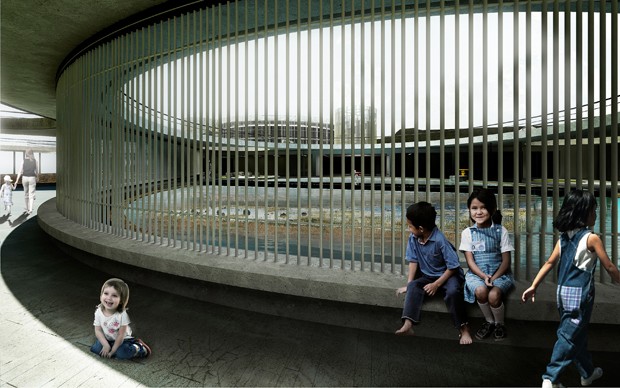
Reuse of the existing water reservoir as public space for encounters
The SILVER prize went to ‘Post-War Collective’ by Milinda Pathiraja and Ganga Ratnayake of Robust Architecture Workshop. Located in the rural town of Ambepussa near Colombo, Sri Lanka, the project aims to reintegrate soldiers into post-war Sri Lankan society by training young men in building techniques through the construction of a community library.
The library, sitting lightly on the landscape, wraps around an inner courtyard and is made of rammed earth walls and recycled materials.
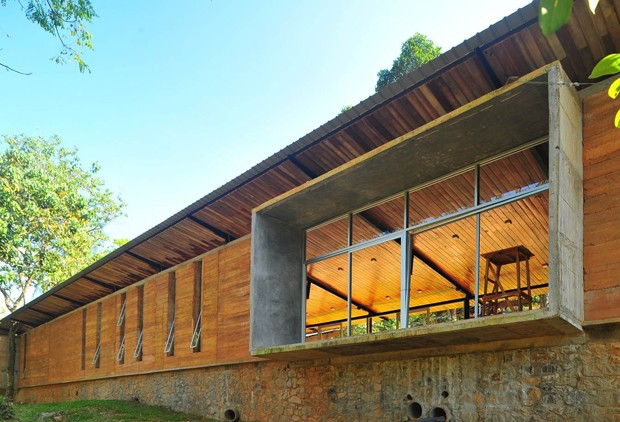
“There is significant value in the basic message of the scheme – and the construction of a library that builds both the physical and social fabric of a community,” commented Mostafavi.
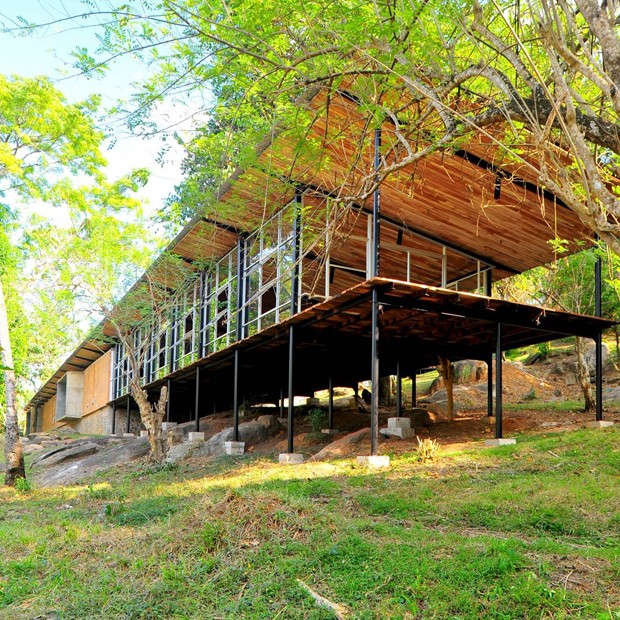
Specific steel welding joints have been strategically incorporated in the building. These joints provide the technical platforms to incrementally transfer welding and cutting skills to the workforce.
A consortium headed by BIG – Bjarke Ingels Group and One Architecture won the BRONZE award for a large-scale integrated floor protection system designed to address the vulnerability of New York City to coastal flooding. Named ‘Dryline’, the project proposes a protective ribbon in Southern Manhattan using a series of raised berms and other measures to create public spaces along the water’s edge.

Although the judges debated whether the project was more reactive rather than proactive, addressing the effects of climate change rather than tackling its root causes, they recognised the project for turning a problem into an opportunity.
“The project makes a political statement by means of an architectural and urban proposition – where tangible solutions to the effects of climate change can be created, where New York City is a prototype from which similar strategies in susceptible regions around the globe could be pursued”, he said.

The ‘BIG U’ contains a protective ribbon: 21 km (13 mi) of flood protection tailored to each neighborhood and the community it serves.
Images: Holcim Foundation

